Everything you need to know about the Mercedes-Benz A250e
This week Chris borrows a Mercedes-Benz A250e, the plug-in-hybrid variant in the A-Class range. Having never driven a hybrid before, Chris talks us through his experiences and addresses common concerns of those considering purchasing or running a hybrid as their next car.
Introducing The A250e
The A250e looks almost no different from a regular A-Class; the only differences being an extra ‘fuel’ cap for the charging port and some subtle EQ badges. This works in the A250e’s favour as the regular A-Class is such a desirable package and works for people who don’t want to change the way their car looks, just the technology driving it.
The A250e uses a 1.3 petrol engine and 75 kW electric motor with a combined output 262hp. This power ensures the A250e can accelerate from 0-60 mph in just 6.6 seconds. Plus, with a 44 mile electric range, the A250e can deliver up to 256.8mpg. The 12kWh battery can be charged in as little as 2 hours.
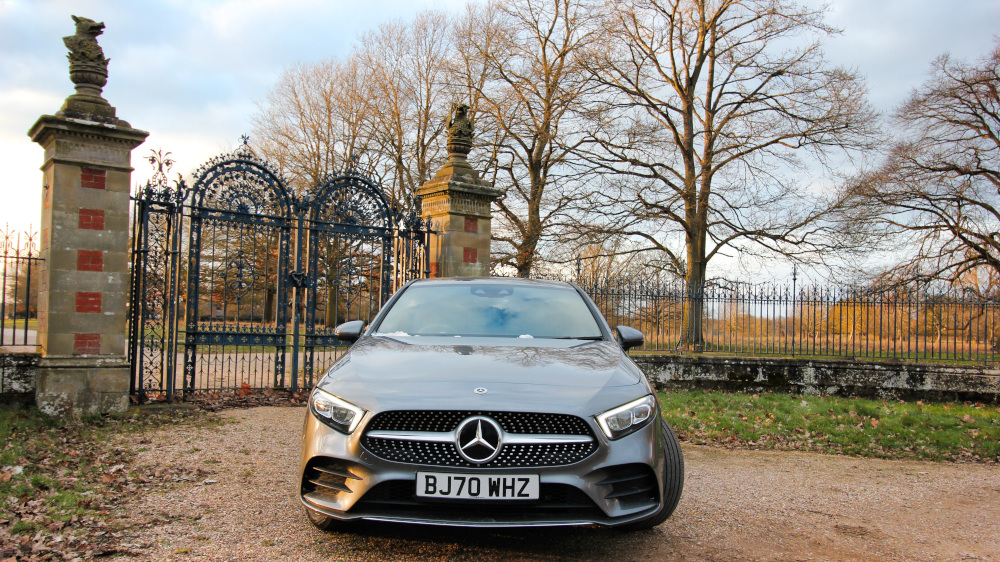
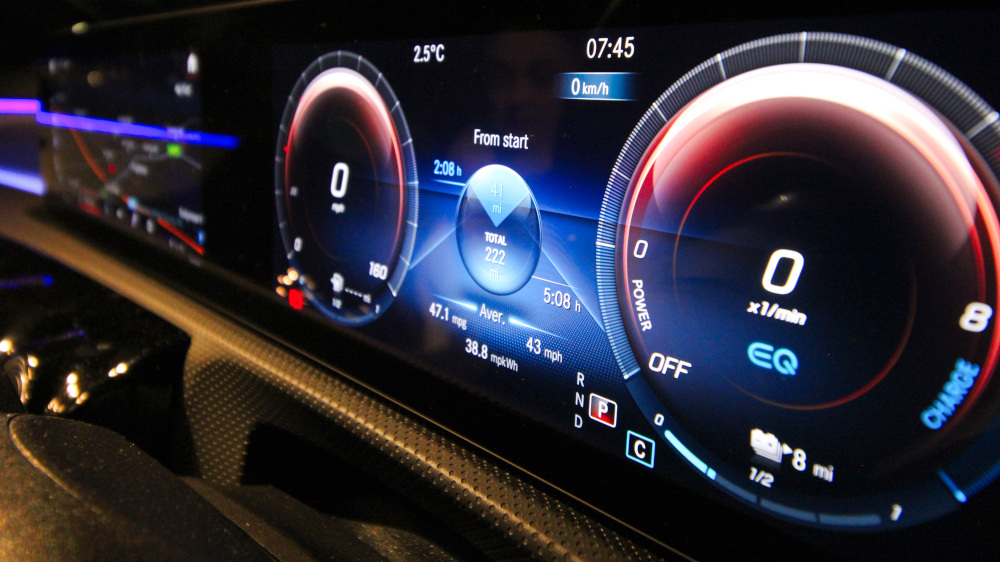
Living with an A250e
The first thing I noticed pulling away from Inchcape Mercedes-Benz in Stratford-Upon-Avon was how silent the A250e is running on electric and the instant torque available. This helps the car surge forward silently which really adds to the Mercedes-Benz driving experience. Other than that the A250e felt the same as any other A-Class in AMG Line trim with its mix of alcantara and leather, sports steering wheel, aluminium trim, dual 10.25” screens and ambient lighting. The A250e has a class leading interior in which you want to spend time.
I noticed the A250e was predicting the traffic situation ahead of me and automatically braking via regeneration to recharge the battery with energy which would otherwise be wasted. This feature took a while to get to used to but after an hour or so it felt almost natural to drive with just the accelerator pedal and the car regenerating when appropriate to slow the car. Using the virtual dials you could see when the car was using electric, the engine or regenerating which aided efficient driving as I could manage my driving.
The A250e has a range of driving modes; Individual, Comfort, Battery Level, Electric Only, Sport and Eco.
All of these modes except ‘Electric Only’ use a combination of the engine and electric motor, favouring electric over combustion engine. Using the car’s satnav the A250e will manage at what points in the journey to use what power source for the most efficient journey possible.
In Sport mode the A250e uses both power sources for maximum performance, ideal for overtaking or enjoying a fun road. The power delivery is smooth with the car managing its power sources to smooth gear changes and provide instant torque.
The car defaults to Comfort and in this mode the car learns your driving style and manages automatically whether to use electric or petrol. This is the mode to use if you just want to use the A250e like any other car. Eco mode is like Comfort but with more aggressive recuperation and visual aids to encourage more efficient driving such as when to lift off the accelerator.
Electric locks the car into electric only mode unless you demand more power in a situation and the car will engage the petrol engine as well. Battery Level maintains the charge in the battery and uses the combustion engine instead.
Finally Individual allows you to set up the way the car drive through customising the steering feel, responsiveness of the accelerator pedal etc.
I was more worried about how an electric car would fit into my life due to charging it at home. As my house does have off-road parking but it is about 10 metres from my front door and I also don’t have a charging point.
My partner’s house however has a drive close to the house and using the supplied 3 pin connector I could charge the car by simply plugging the car into a standard socket. However, this method did have some drawbacks such as the process taking up to 6 hours or more to charge the car due to the slow charging rate. It is also not recommended to use this method as your sole method of charging and treat it as a last resort because of the strain it places on the circuit for long periods of time.
Instead ordering a wallbox is a simple process for homeowners and this will greatly increase the charge rate and safety of charging your car at home – this is especially important for fully electric cars with much larger batteries which take much longer to charge. There are often incentives available to discount the installation cost of a wallbox.
For people in situations like myself with on street parking, parking away from their home or who are renting I was really impressed with the number of public charging stations, opportunities to charge at my workplace and people renting out charging points on their own drives. As a result I think it is still viable to run an electric car and benefit from it.
Having done some research and using apps such as Pod-Point which locates nearby charging points and filters them for price and connector type, there were at least 5 available charging points (it shows which are in use to save a wasted trip) within 5 miles of my fairly rural location. I used a Pod-Point charger at Tesco whilst completing our food shop, this seems the most intuitive and convenient way an electric or hybrid car can fit into your life – charging it whilst its parked and you’re getting on with your life plus the charge was free for Tesco customers.
All I had to was plug the car in and use the app to confirm the charge, it took less than a minute. Using this charger, from 0% and in freezing temperatures the car would take about 2 hours to complete a charge. I would recommend not always draining the battery to make it easier and quicker to quickly top up the battery. Like charging other electric devices in our lives such as a phone as and when required.
The whole process was simple considering it was my first time using a public charging station and the cable locked to the car whilst I did the shopping to ensure the car was safe and secure.
Mercedes-Benz A250e FAQ
Charging Process
No you don’t, in fact the quickest charging happens between 20 and 80%, so frequent top ups within this range can be more convenient and preserve battery health.
Fully charging the battery will however give you the maximum range and therefore benefits of the electric motor in a PHEV. The battery is designed to last the lifetime of the car even with frequent charges outside of the 20-80% range.
To charge the A250e you simply open the charging port which looks like a fuel cap but is on the drivers side and either use the charging cable supplied with the car or the charging cable attached to the charging station. Then insert the cable into the car. Follow the instructions on the charging station such as payment instructions and confirmation, then check the car is charging. The status light around the charging port should illuminate green and the dashboard will give a prediction of when the battery will be fully charged.
Lock the car and leave it to charge. When returning simply unlock the car and use the unlock button next to the charging port to remove the cable. If the cable belongs to the car return to the boot.
From 20% to 80% charging is most rapid, outside of these charging is slower to protect the battery. Other factors also affect the charging rate such as – temperature (colder temperatures slow charging rate), the charging rate and the size of the battery.
Officially though between 20% to 80% these are the times:
• At home with a 3-pin plug, 5 hours to charge, giving 8 miles per hour charged.
• Home wallbox, 3 hours, 13 miles per hour charged.
• 7kW Public charger, 2 hours, 24 miles per hour charged.
• 22kW Public charger, 2 hours, 24 miles per hour charged.
The A250e maximum charging capacity is 7kW per hour so even though there are faster public chargers the A250e is unable to charge any quicker.
I found in my experience charging from 0% and in cold temperatures that at home using a 3-pin plug it could take up to 7 hours to charge and at a 7kW public charger it took about 2 hours. As soon as you plug the A250e the dashboard predicts how long a full charge will take and this can be monitored from your phone on the Mercedes app.
At home to work out how much it will cost to charge your car, check the battery’s capacity and your electricity rate. For the A250e this is 12kWh and for myself 11p per kwh. 0.11x12 = £1.32 for a range of up to 44 miles. This means for me a full charge costs £1.32 and when driving on electric in optimal conditions each mile costs 3p. Whilst everyone’s individual situation will influence the cost. This is still a large cost saving compared to a regular petrol car such as an A180 which costs approx. 7p per mile.
At a public charger the costs can vary. Some are free for customers such as Pod-Points at Tesco. Whereas others can cost money, using apps such as Pod-Point and Zap-Map you can see nearby chargers, if they are available and how much they cost. Quite a common cost for public chargers was 30p per kWh or a flat rate connection fee often around £1 then free after. The rapid chargers I found at service stations also cost around 30p per kWh which whilst costing more than at home is much quicker to charge and still costs less than running a combustion engine car.
It may not be possible to have a home charger installed at home due to reasons such as not having off-road parking, renting or having parking not close enough to your home.
In these situations it is still possible to run an electric car, especially a PHEV like the A250e. It is most convenient to charge an electric car where it is parked (which is almost 95% of the time for a car), using chargepoints at these locations. For most people this is at home but other frequent destinations may also have chargepoints such as work, shopping centres and leisure centres. Then less frequent longer journeys can benefit from on-route rapid chargers found at service stations.
Workplace charging and charging as part of a commute such as at a train station car park, in more normal times in particular serves as a good opportunity for people who cannot charge at home. As people often spend over 8 hours at work which is plenty of time to fully charge the car and most people’s commutes are less than 30 miles. I know that with my commute of 8 miles and using the charger at work, I could commute everyday of the week in an A250e and not use the petrol engine once.
The A250e uses a Type 2 Connector, this can be used at home, work or any public charging station. The maximum AC the car can charge at is 7.4kW.
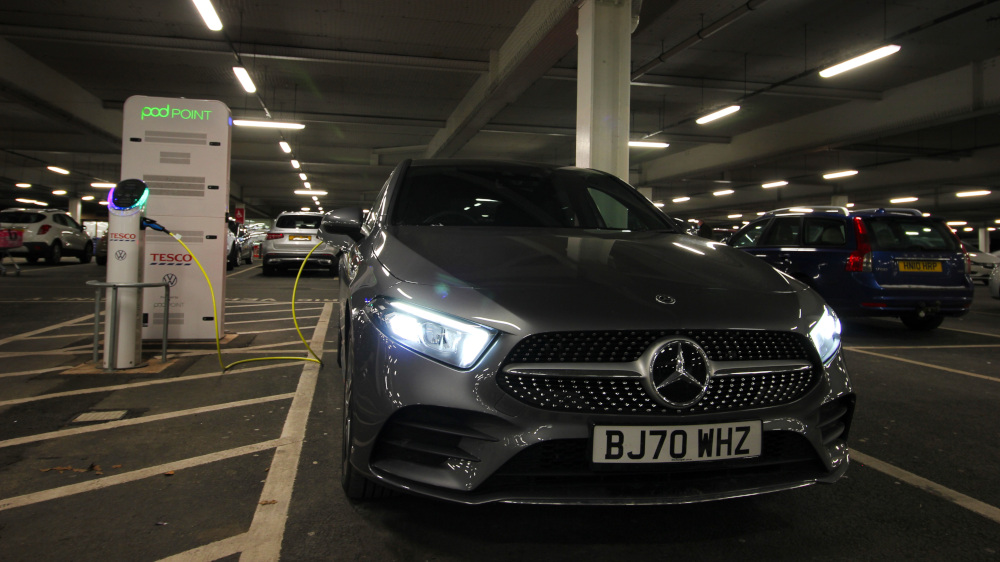
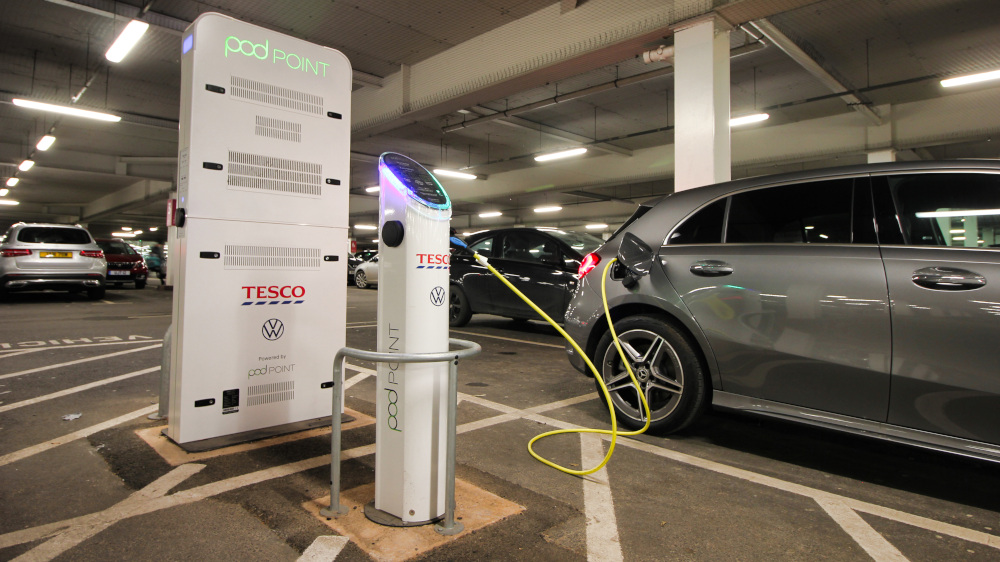
Hybrid Technology
Yes, in fact servicing costs may end up being lower than a combustion engine car. This is because components such as the brake pads and discs receive less use due to the regen braking of the electric motor so wear out slower and need replacing less frequently. The hybrid element of the car should need little maintenance due the lower number of moving parts. Therefore, A250e servicing is likely to cost a similar amount to a regular A-Class.
Yes, overall the driving experience felt like any other A-Class. Except when in electric mode the silence adds a calming element and another dimension of luxury to the driving experience. Electric mode also gives instant torque so the A250e surges forward impressively when you need the performance. The 1.3 petrol engine is powerful enough to give ample power and when combined with the electric motor the A250e comes into its own and provides a dynamic driving experience.
The regen braking and predictive braking can take a little bit of time to get used to, but after an hour or so I was used to driving almost never needing to touch the brake pedal and enjoyed seeing the battery recharging from what is otherwise wasted energy.
The A250e looks and on the whole drives like any other A-Class, which is a real benefit of the model.
I was really impressed with the real world efficiency of the A250e, not adapting my driving style and still keeping the climate control on high with the heated seats and lights on in very cold conditions and never charging the battery beyond 50% charge. On short, local trips in which the combustion engine was barely used I frequently saw over 100mpg. On a longer return trip to the dealership on the motorway using just the petrol engine, the A250e still managed over 45mpg and with careful driving I should think 50mpg is still realistic.
Regenerative braking also features which uses the electric motor to add resistance to slow the car, the energy created is stored in the battery. The amount of regen braking can be manually adjusted in Electric mode. The A250e also adjusts the amount of regen automatically by analysing the car’s surroundings, looking at relative speeds of cars ahead, changes in speed limits, hills, upcoming bends and junctions. This intuitive system feels strange at first but soon becomes second nature and ensures that as much braking as possible is using regen rather than wasting energy via the traditional discs and pads.
The A250e also has other fuel saving technology, it always starts in electric mode and even when the battery is emptied, the A250e can coast with the engine off and deactivate 2 cylinders when cruising to save fuel.
Purchase, Tax and Grants
The A250e benefits from £0 VED Road Tax in its first year and then £140 for the next four years. The A250e is also London Congestion Zone Charge and Ultra Low Emission Zone exempt, further saving money on running costs.
The low emissions of the A250e also benefits company car drivers with lower BIK rates.
During the 2021 tax year, the BIK rate on the A250e will be 7% which gives a annual BIK rate of £2,305. In 2022 this will be 8% and £2,634. Whereas, an A180 would have BIK rate of 30%, so the A250e offers a large saving for company car drivers.
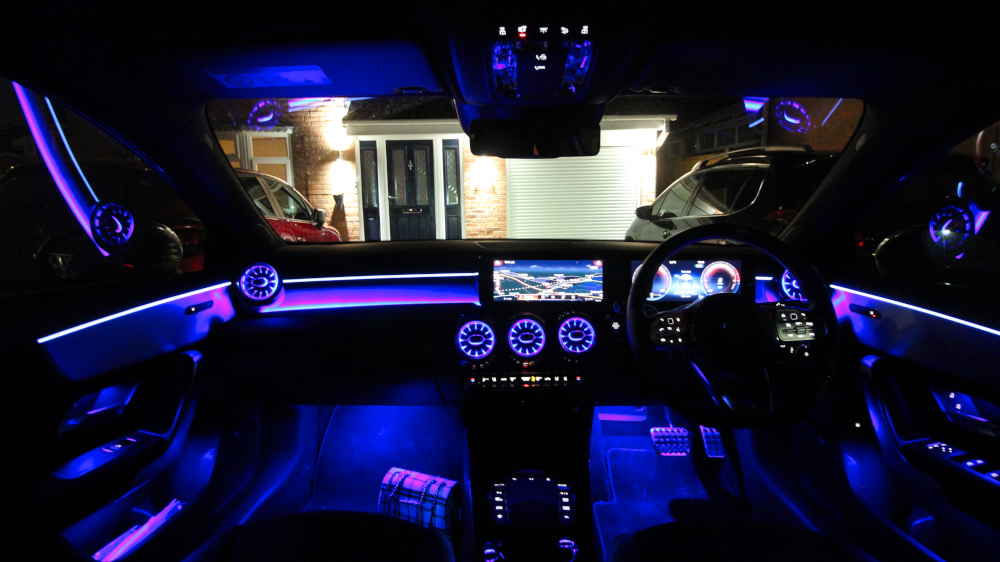
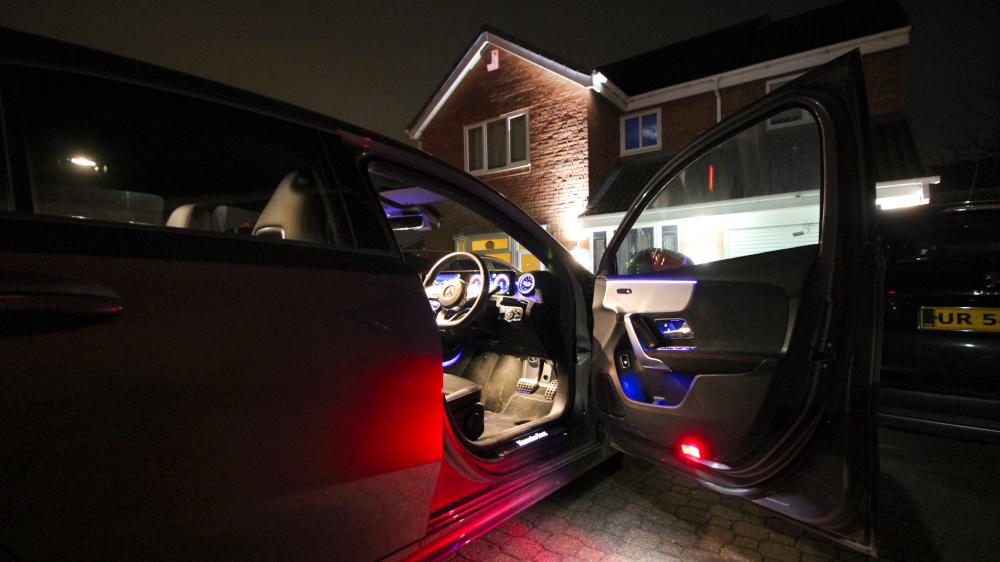
PHEV vs Electric
Plug-in-hybrid (PHEV) cars offer the perfect compromise between combustion engine cars and all electric, combining performance, efficiency and range.
Benefits include:
- Lower emissions - PHEV can be driven in pure electric mode to drive without producing any emissions. PHEV can drive with up to 55% lower emissions overall compared to a petrol car.
- Cheaper to run - PHEV cars can achieve higher MPG and produce lower emissions than a conventional car so fuel and tax costs are lower.
- Long range compared to pure electric - PHEV cars have the benefit of using petrol or diesel so can be quickly refueled and store more fuel than a battery for longer range.
- Can recharge themselves whilst driving - PHEV benefit from being plugged in but can also recharge as they drive.
Electric cars are increasingly popular. Despite car sales decreasing by 29.4% in 2020, electric car sales in 2020 were up by 185.9% compared to 2019.
Running an electric car has many benefits:
- Cheaper to run - recharging an EV is 58% cheaper than refueling a petrol car.
- Cheaper to maintain and more reliable - fewer moving parts means servicing is cheaper as there are less parts to wear out.
- Better for the environment - whilst driving an electric car emits no emissions, using renewable energy to charge reduces your carbon footprint further.
- Driving Dynamics - instant torque from standstill ensures a more responsive driving experience.
- UK Government's Plug-in Car Grant - government support can make buying an electric car more cost effective than a petrol car.

